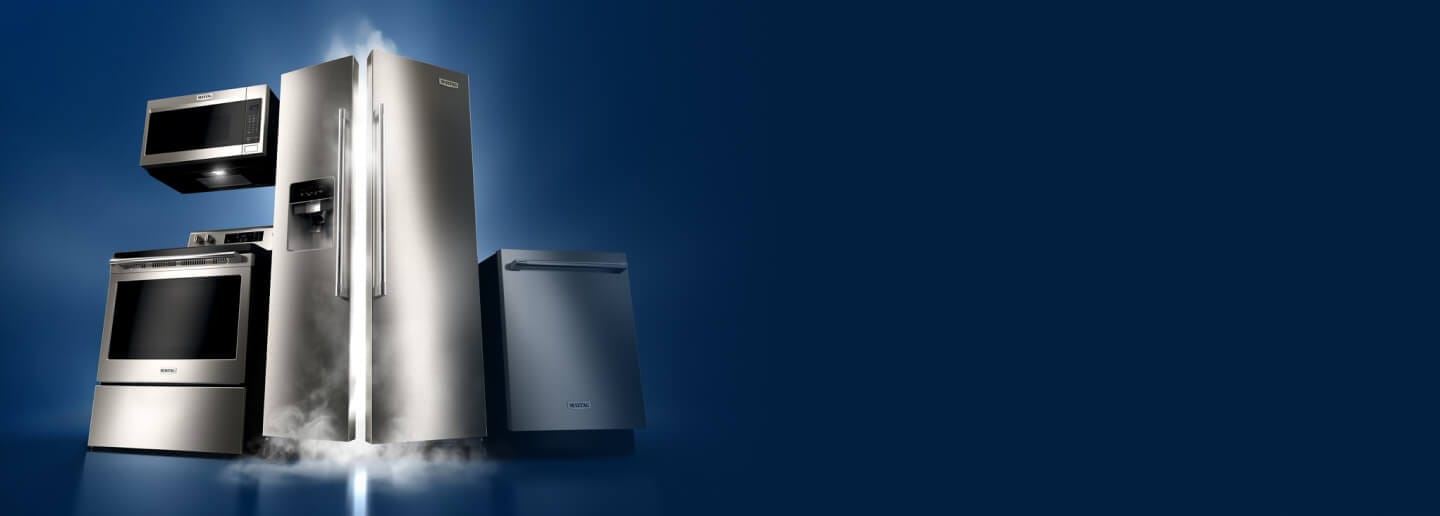
Bake vs. Roast vs. Broil: Selecting the Right Settings
Baking, roasting and broiling are valuable cooking techniques for any cook. Whether you’re experienced or just learning, fully understanding the differences between a bake, roast and broil will help you build your skills. These essential cook settings are available on most ovens no matter the fuel types or features, so use this guide to get started and cook up beautifully baked, roasted and broiled dishes.
What is the difference between baking, roasting and broiling?
Baking and roasting are similar techniques that use all-around oven heat to cook food completely. However, roasting uses higher temperatures for thicker, tougher foods. Broiling uses only top-down heat to completely cook delicate food or just crisp and brown the top of already-cooked dishes.

Baking uses moderate temperatures to cook food. Heating elements on the top, bottom and sometimes the back of the oven are used for an all-over cooking method.

Roasting uses the same all-over heat as baking but at higher temperatures.

Broiling uses top-down heat at high and extra-high temperatures to brown or crisp the top of food.

NEED HELP FINDING YOUR NEXT RANGE?
What is baking and when should I use it?
The bake setting cooks food by heating the air inside your oven, usually with heating elements on the top and bottom. A typical bake temperature is around 350° F, but can be anywhere from around 200 to 375° F. This slower cooking method is appropriate for getting flavor out of a wide range of foods. Learn more about what people mean when they say “baking” vs. “cooking”.


Which foods should I bake?
Baking is ideal for food without a solid structure like doughs and batters. The lower temperatures help slowly build structure while retaining moisture. It’s also great for thicker cuts of meat or casseroles that need to be cooked all the way through, but might be prone to drying out or burning at higher temps. Feel free to keep food covered or uncovered, depending on how much moisture you want surrounding the dish or how much crisping and browning you’re looking for.
Baked goods: cookies, pies, cake, bread, etc.
Pasta dishes: lasagna, ziti, macaroni and cheese
Thicker-cut pieces of poultry or pork
Casseroles

Double oven ranges
A range you can count on, no matter the meal
Start dinner on time, any time when you cook multiple dishes at different temperatures with Maytag® double oven ranges
What’s the Difference Between Baking and Roasting?
Roasting uses the same type of all-over, dry heat as baking, but at higher temperatures between 400 and 450° F. Choose the roasting method to get thicker, tougher foods brown and crisp, and the baking method to retain moisture in thinner, more delicate foods. You may only see a “bake” setting on your oven, which can be used to roast after you’ve turned up the temperature.


Which foods should I roast?
Tougher, thicker foods are best for roasting because they can handle higher heats better. High heat also means you can easily get a flavorful brown, crispy exterior on food like fatty meats and potatoes. Roasted foods should usually be uncovered to achieve browning.
Whole cuts of meat on the bone: entire chickens and turkeys, pork or beef roasts, etc.
Thicker vegetables: brussel sprouts, carrots, cauliflower or any root vegetable
Cut-up potatoes, including sweet potatoes
Sheet pan dinners with meat and vegetables
What is broiling and when should I use it?
Broiling uses only the upper heating element in your oven, applying high temps to the top of dishes for fast flavor. Use this method to cook and crisp delicate foods or brown the top of already-cooked dishes. Most broil settings use temps between 500 and 550° F, so keep a close eye on cooking progress.


Best Foods to Broil
Broiling is ideal for achieving a sear on thinner fish and meats that don’t require a high internal temperature. Vegetables broil nicely as well since they can cook and crisp without getting soggy during a longer cook time. Many people use their broiler to get a crunchy layer on the top of already cooked, often cheesy, dishes. Learn more in the Maytag guide to broiling.
Thin-cut meats: salmon, steak, chicken
Quick-cooking vegetables: asparagus, zucchini, peppers
Breads that need a quick toast
Cheesy dishes that could benefit from a brown, crunchy layer on top like pizza or macaroni and cheese


Are Convection Bake and Convection Roast Different?
You may see a convect bake or convect roast setting on your oven. The same rules of baking and roasting apply if you use these settings. The only difference is that a convect setting uses a fan inside the oven to circulate air around dishes for multi-rack cooking and sometimes quicker cook times. Learn more about convection vs. conventional cooking.
Beyond Bake vs. Roast vs. Broil Oven Settings
Now that you know the difference between baking, roasting and broiling, you can tackle a wide variety of recipes. Be sure to use the proper oven rack placement and maximize your oven space to help you get great results. Learn more about powerful oven settings and options by exploring Maytag® ranges and wall ovens. Or, if you’re looking for a new cooking appliance to expand your skills, zero in on the right one with our article that helps you find the best Maytag® range for you.

Power Preheat
Enjoy dinner faster
Maytag® wall ovens with Power Preheat let you start cooking sooner so you can get dinner on the table faster
Explore Maytag® ranges and wall ovens
Maytag brand offers a wide selection of ranges and wall ovens designed for power and durability. Get mealtime done quickly with appliances you can count on.

MAYTAG® PERFORMANCE LINEUP
POWER PACKAGES THAT GET THE JOB DONE
Explore Maytag® kitchen appliances designed to power through mealtime and cleanup and look good while doing it
